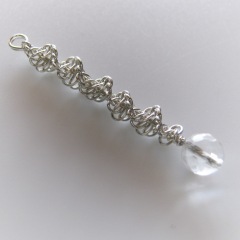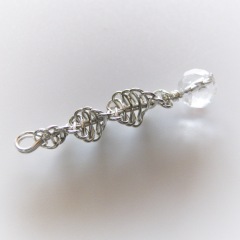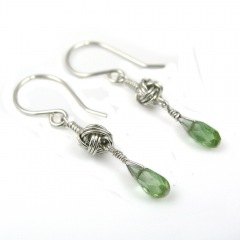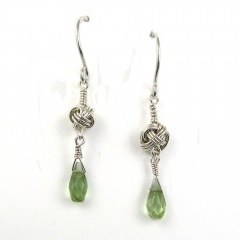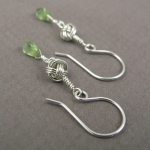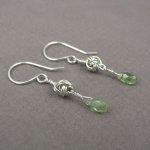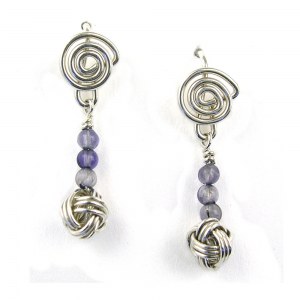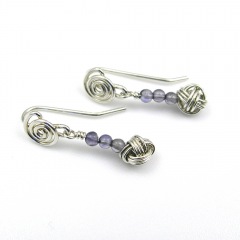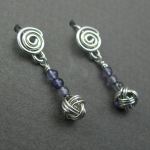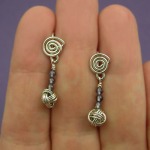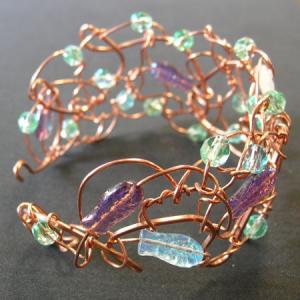Spiral Wand Pendant (1) (2011)
Argentium silver, quartz
Formed, knotted
L 4.4 cm x .5 cm (6 mm bead)
I pulled out the spool of argentium silver while working on the week 8 project, and this pendant grew out of one of the failed attempts at embellishing the earrings.
I used to make little mini-wands with quartz points set in copper tubing and wrapped in leather for the New Age crowd. Clear quartz is regarded as an energy amplifier, and in wand form is used to direct healing energy to a specific place in the body. This updated version of the wand gives a nod to the DNA helix in the knotted spiral, and the faceted quartz bead adds a little touch of bling.
Macramé is one of those techniques that makes a very natural transition to wire, but the stiffness of the metal requires that the knots be planned out to minimize kinking. Pulling the knots tight also quickly work-hardens the wire.
Besides a bit of coiling, I haven’t worked with the argentium silver, so this was really my first experience with it. I’m finding it a bit stiffer to work than sterling, but I’m looking forward to seeing what it can do.
Spiral Wand Pendant (2) (2011)
Argentium silver, quartz
Formed, knotted
L 3.3 cm x .5 cm (6 mm bead)

